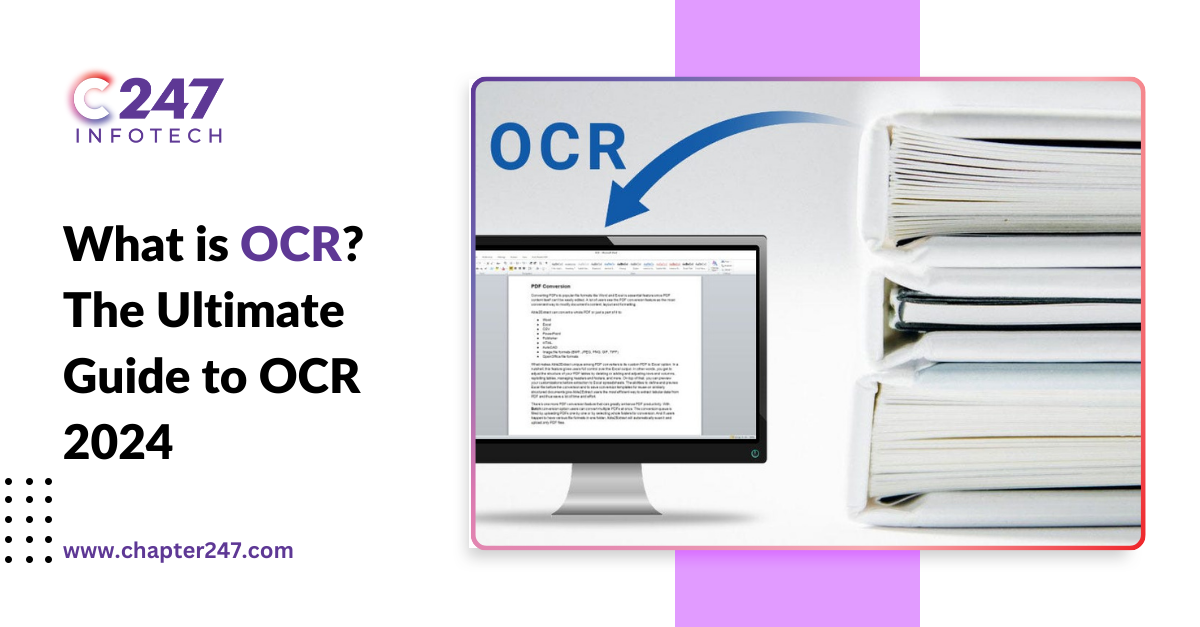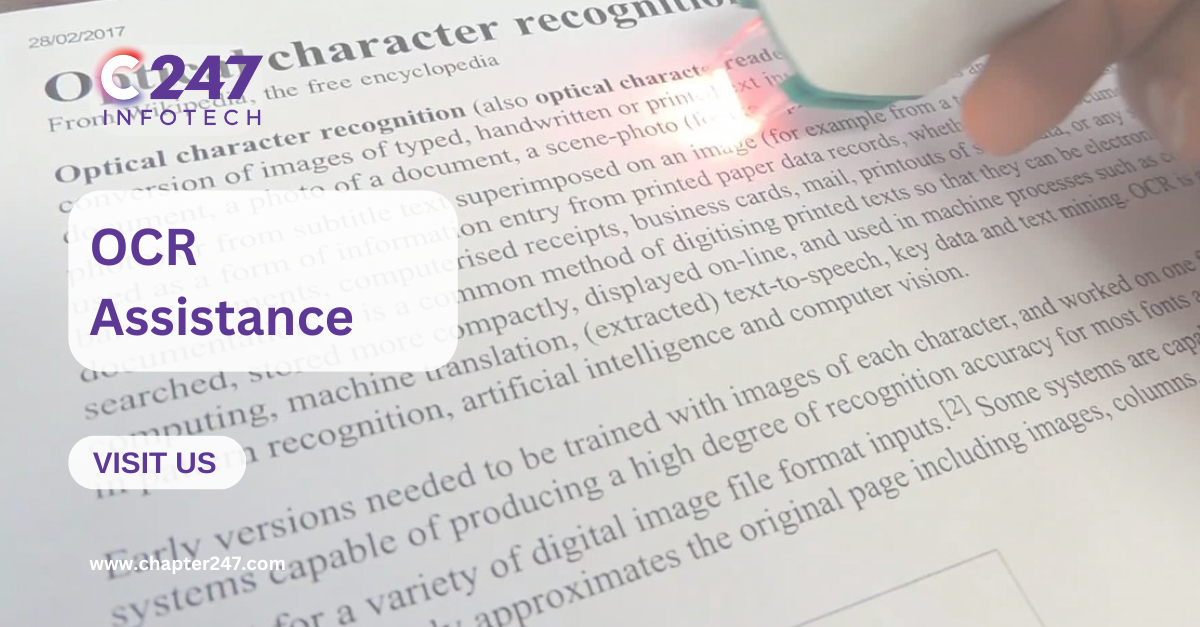You’ve probably heard about OCR by now, but you might need to figure out how it can benefit your company. It’s called text recognition, to put it simply. Businesses frequently use OCR to read license plates, extract data from documents, and gather data from receipts.
In 2023, the market for optical character recognition (OCR) was valued at US$12.2 billion. The IMARC Group projects that the market will grow at a 14.2% compound annual growth rate (CAGR) from 2024 to 2032 when it reaches US$ 40.8 billion. However, why are sectors like finance, retail, travel, law, and healthcare adopting it more frequently?
Additionally, many companies now offer OCR software and more sophisticated options like Intelligent Document Processing (IDP). So, what’s so special about OCR?
Understanding OCR
Optical character recognition (OCR) converts printed texts into digital picture files. It’s a digital copying device that uses automation to convert scanned documents into editable and shareable PDFs. The process of using a computer to scan a receipt is an example of OCR.
The scan will then be saved as a picture on your computer. A PDF OCR tool will allow you to convert an image to a text document with the content saved as text, even if you will not be able to search, edit, or count the words in the image. OCR software can extract data from scanned documents, image-only PDFs, and camera photos. It removes the need for human data entry and allows static information to be adjusted.
Text Recognition In Images
An important field of study in machine learning, computer vision, artificial intelligence, and pattern identification is optical character recognition. It has developed into a mature technology and was one of the first areas of artificial technology study.
Dr Edmund Fournier d’Albe created the Optophone in 1913 to scan text and turn it into sound for those who are blind or visually challenged. This technique has gone through several stages of development since then.
With the digitization of old newspapers in the 1990s, the technology gained popularity. OCR (Optical Character Recognition) technology has also advanced further as a result of the introduction of smartphones and electronic documents.
Digitization Of Documents
Paper documents are frequently converted to digital representations using OCR technology. This makes it simpler to save, retrieve, and manage records, allowing businesses to keep electronic archives and use less physical storage.
For instance, OCR is used by libraries to scan books and old papers into digital files that can be searched and accessed online. For example, Google Books provides digital representations of millions of books with OCR.
Automated Input Of Data
OCR minimizes the need for human data entry by automating the extraction of data from forms, invoices, and receipts. In sectors like finance, healthcare, and logistics in particular, this increases accuracy and efficiency.
For instance, the banking sector employs OCR to scan invoices and checks swiftly. For example, data extraction from a variety of document types is automated with ABBYY FlexiCapture, which lowers processing errors and timeframes.
Improving Availability
Through voice or braille conversion, OCR enables visually challenged people to access written material. This facilitates improved information access and encourages inclusion.
For instance, OCR is used by programs like Kurzweil 3000 to transform printed materials and textbooks into digital text that may be read out to children who have learning challenges or visual impairments.
Identity Confirmation
Passports, driver’s licenses, and ID cards are among the identity documents that OCR technology is used to validate. For security and authentication procedures in a variety of businesses, this is crucial.
Example: To ensure a smooth and safe onboarding process, OCR is used by mobile banking apps such as those provided by JPMorgan Chase to scan and validate identity papers from customers throughout the account opening process.
Content Organizing
To facilitate text search and indexing inside scanned documents, OCR is integrated into content management systems (CMS). This improves digital archives’ and libraries’ capacity to manage and use their content.
To enhance document organization and retrieval for businesses, OCR is utilized by enterprise information management systems such as Microsoft SharePoint to index and navigate through scanned documents.
Fine-Tuning the Picture
The optical character recognition program enhances the document’s necessary capture elements in this step. To create a text that is clean and simple, any flaws—like dust particles—are removed, and edges and pixels are smoothed.
This stage facilitates the program’s ability to record human data entry while enabling it to “see” the words being entered clearly and without, say, smudges or uneven dark patches. These kinds of image-processing activities are necessary for automatically brightening or sharpening images in many different types of vision pipelines.
Conclusion
With the use of optical character recognition (OCR) technology, users may extract text from photographs or scanned documents and convert them into a computer-readable format. When data is required for additional processing, like identity verification, loyalty marketing campaigns, cost management, or bookkeeping, this comes in useful. Essentially, by employing OCR software to identify letters, words, line items, phrases, and patterns, you may reduce the amount of manual document processing. To know more, partner with Chapter247.








